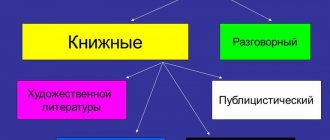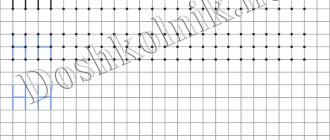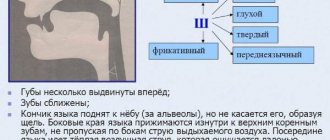Sound waves or sound are vibrations of particles propagated in waves in any medium - gaseous, liquid or solid
, – which are perceived by the hearing organs of animals.
When we study light, we are convinced not only that it exists outside of us, but moreover also that we need to have eyes to perceive light, otherwise we would not even suspect about it. Everything around us goes dark when we close our eyes. In the same way, the world of sounds would not exist for us if we did not have an organ of hearing that perceives them.
So, we call sound what we feel with our hearing aid. But the phenomena of the external world for us have the character of sound only from the moment when they reach our ears. Covering our ears with our fingers, we will not hear the conversation, although it continues near us.
- Sound waves, like light, represent the action of special wave-like movements on us. Phenomena common to all kinds of wave-like motion will occur in both light and sound, although there are enormous differences between the one and the other kind of wave-like motion.
- Sound waves differ from light in that wave-like movements occur not in interstellar space, but in the material environment. This medium, for the most part, is air. But it can also be any gas or mixture of gases; it can also be liquids, like water, and solids. Where there is no ordinary matter, there cannot be sound.
It follows from this that no matter how grandiose the sound phenomena occurring on the Sun and Moon are, they cannot produce such noise that could be heard here on Earth, because outside our atmosphere, between the Earth and celestial bodies, there is no ordinary matter.
Sources of sound waves
We say that sound is wave-like movements or vibrations. Anyone who has seen or felt what happens when a sound is born will immediately agree with this. So, for example, if you pull a thread tightly and then quickly hit it, you can see how it vibrates. And at the same time hear a small musical sound. The same thing will be observed in a sounding piano string or in a bell. And we can feel these vibrations if we touch them.
Sources of sound waves. Scheme of a stretched string
We also know that when you hit glass, it makes a sound that stops if you touch it with your finger to stop its vibrations. All these phenomena serve as proof that certain vibrations produce sound. Every time a bell, glass or string vibrates, the air receives light blows from them. It produces a series of waves that reach our ear, which is why we hear sound.
It is not difficult to prove that air conducts sound waves. For this purpose, the following experiment is carried out: an electric bell is placed under the glass cover of the air pump and made to ring continuously. Then they begin to pump out the air.
Sound waves. Call experience
When the amount of air under the hood decreases, we see the bell just as well as before, because the light spreads when there is no air. But the sound becomes quieter and finally stops. The bell continues to oscillate, but since there is no more air around it, it cannot produce those waves. which we call sound. If air begins to re-enter under the hood, the sound is restored. This simple experiment shows us not only that air serves as a conductor of sound, but also that the strength of sound depends largely on the state of the air.
When we have the opportunity to compare the speed of light with the speed of sound, we find a huge difference between them. But we see fire and smoke when firing from a distant cannon several seconds before the sound of its shot. Light travels so quickly that even a significant distance at which an active weapon is located from us, it travels in just a thousandth of a second; whereas sound travels much more slowly, and the speed of its propagation with such an experiment is very easy to calculate.
How to Capture Video from iPhone with Sound
- To get started, go to “Settings” - “Control Center” - “Customize controls”;
Add a screen recording button to Control Center via Settings
- In the list of available controls, find “Screen Recording” and turn it on by clicking on the green plus next to it;
There you will find other functions that you can quickly access
- Return to your desktop and open Control Center by swiping down from the top right corner;
Recording with sound allows you to capture not only your voice, but also sound from applications and games
- Press and hold your finger on the screen recording icon;
- Turn on the microphone so that its icon is highlighted in red and start recording.
How to quickly scroll to the bottom of a page on iOS
The recorded video is saved in the Photos app by default. To find it, you don't even have to open it and search for the video manually. Apple has thought of everything for you: after recording is complete, you will receive a notification from the Photos app, clicking on which will take you straight to the newly recorded video. All that remains is to look at it and decide whether it is worth subjecting it to additional post-processing or whether it can be sent as is.
Propagation of sound waves
Let's take several billiard balls and place them in a straight line on the billiard table so that they touch each other. Then take another ball and roll it so that it hits the ball lying at the end of the row. Then each of the balls in the row will alternately compress and exert pressure on the next one, as a result of which the ball located at the other end of the row will bounce off it.
Propagation of sound waves. Experience with billiard balls
Each ball of the row here alternately contracts and expands. The same thing happens in the air when sound passes through it. We can imagine that the wave is forced to move by particles of air hitting each other as they move back and forth, just like these billiard balls.
Sound speed
The speed of light is the same under all conditions, as far as can be studied. And the speed of sound changes significantly with changes in the conditions under which it propagates in the air. It is a great blessing for the art of music that the speed of sound varies only slightly with changes in its pitch or strength.
It would be very difficult to listen to music from a distance if the sounds of different instruments of the orchestra reached our ears at different times, while the composer intended them to be heard simultaneously. Or, if the motive played by one part of the orchestra reached our ears before that played by another part of the orchestra, or later.
Speed of sound in air
The normal speed of sound in air is considered to be about 331 meters (that is, about a third of a kilometer) per second. When the temperature of the air rises, it becomes more elastic and then the passage of sound through it occurs faster.
The plane breaks the speed of sound
The speed of sound increases with increasing air temperature if its density remains the same.
If we take into account the dependence of the speed of sound on the elasticity of the medium that conducts it, then it will become clear to us why sound travels much faster in liquids than in gases, and even faster in solids.
Speed of sound waves in solids
Sound waves travel faster in solids than in air. Iron, when in a solid state, has greater elasticity than air, and sound travels in it almost seventeen times faster than in air.
The speed of sound in air or any other medium must not be confused with pitch. For a musical sound it depends on the number of vibrations per second, and the more there are, the higher the tone.
Sound, as we have said, passing through iron reaches our ear seventeen times faster than when it passes through air; the pitch of its tone remains the same in both cases, because the number of vibrations per second remains the same, although the sound passes through the iron much faster.
Speed of sound in different media
Gas:
- Chlorine – 206 m/sec
- Carbon dioxide – 259 m/sec
- Oxygen – 316 m/sec
- Hydrogen – 1,284 m/sec
- Neon – 435 m/sec
- Methane – 430 m/sec
- Air – 331 m/sec
Liquid:
- Water – 1,483 m/sec
- Mercury – 1,383 m/sec
Solids:
- Glass – 4,800 m/s
- Lithium – 6,000 m/sec
- Diamond – 12,000 m/sec
- Iron – 5,950 m/s
- Gold – 3,240 m/sec
Screen recording with sound on iPhone
With Audio Capture, you can not only show what's happening on your iPhone's screen, but also describe it with your voice. You don't even need an external headset for this, because all recording is done using the built-in microphone. The main thing is not to cover the area with the microphone with your hand or anything else during recording. Otherwise, the output sound may be either too quiet or not recorded at all. Therefore, if you have an iPhone, hold it suspended by the side edges, and hold the iPad vertically, if possible without pinching the bottom end.
How to teach an application to always request access to a location on iOS
However, in this mode you can record not only your voice, but also the sound of the iPhone or iPad itself. Yes, you are right, screen capture on iOS also captures audio in games, video services and other applications with voice acting. That is, in essence, thanks to this function, you will be able to conduct, if not live broadcasts, then at least record the gameplay of the games you play, and then, with a little adjustment, post it on YouTube or send it to the person for whom the recording was intended. The main thing is to remember that recording films and TV series on paid video platforms in this way and then sending them to someone or distributing them in another way is illegal and amounts to piracy.
The power of sound
When we begin to study the strength of sound at different distances, we will find that the first law regarding it is the same as for light. And as far as we know, this law is true not only regarding wave-like movements, but also such a phenomenon as gravity.
In precise scientific language, the law on the power of sound is stated as follows:
The intensity of sound varies inversely with the square of the distance from its source
In this way, we can briefly and clearly express, for example, the idea that if we move away from the source of sound to a distance that is three times greater than before, then the strength of the sound will decrease not three, but nine times: nine is the square of three. The square of a number is the number obtained by multiplying it by itself.
When this law is applied to the force of light or gravity, we do not have to consider any conditions that may affect them. But when it comes to sound, the situation is somewhat different. Sound is affected by the density of the medium in which it passes; on a frosty night the air is very dense, which is why we breathe easier then, and the sound will be heard more strongly at this time. On the other hand, the sound of a gun shot high in the mountains is weakened because the air there is rare. This phenomenon reminds us of the experiment with a bell under the hood of an air pump.
How to Share Video with Audio on Zoom
Since this feature is available for desktop and mobile apps, let's check the steps separately.
Share video with audio in Zoom desktop apps
When you enable this feature, any sound played on your computer will be heard by others.
Note: You cannot share computer audio when multiple screens are used in Zoom.
Here are the steps to share audio on Zoom:
Step 1: Join the Zoom meeting.
Step 2: Click the Share Screen button on the bottom toolbar.
Tip: Here's a guide on how to find out your Zoom meeting password.
Step 3: You will be shown windows that you can share. Select the one that contains your video. This could be from a browser or a video on your computer.
Then check the "Share Computer Sound" checkbox at the bottom and click the "Share" button.
Note: Others will even hear a notification and other sounds on your computer when you share computer audio.
Share computer audio zoomed in after screen sharing
If you've already started screen sharing, you don't need to stop sharing to play computer audio. To share or stop computer audio after you've started sharing your screen, hover your mouse over the top edge of the screen. A toolbar will appear. Click the three dots icon and select Share Computer Sound. Repeat steps to turn off the sound.
Share video with audio in Zoom mobile apps
Although the screen sharing feature is available in the Zoom Android app, you cannot stream audio along with it. However, things are different in the iOS version of the app, where you can share your phone's audio.
To do this, you simply need to click on the “Share Content” button at the bottom of the Zoom meeting. Then select Screen.
The Screen Casting screen appears. Click on Zoom and click the Start Broadcast button. Now play the audio or video on your phone and others will hear the same sound.
To stop streaming, tap the top edge of the screen and select Stop from the pop-up menu. You will be taken to the Zoom broadcast screen. Tap anywhere to return to the call.
Sound reflection
When we watch the waves of the sea or lake hit a steep bank, we see that they are reflected from it and bounce back. If the surface of the shore is flat and vertical, then we see that the waves are reflected from it in the same way as a ball from a wall. If sound is truly a wave-like movement, then we can always expect that it will be reflected in the same way as water waves, and we often have to be convinced of this.
Any moving waves can be reflected from obstacles in their path; this is done both in the light and in the sea waves. There are laws of reflection that apply equally to these different phenomena.
- The first of them says that the angle of incidence of a wave is equal to the angle of its reflection: this means that the angle at which the wave reaches the surface is exactly the same as the angle at which the wave moves away from it in the other direction. The exact same phenomenon occurs when throwing a ball against a wall. If we throw a ball at a wall in a perpendicular direction, then it will bounce off it in the same direction; if we throw the ball at an angle, it will also bounce at an angle. And in the case when the wall is flat and there are no irregularities on the ball, and if at the same time we can measure the angle at which the ball falls on the wall and the one at which it bounces off it, then we will always find that both of these angles are equal.
The angle of reflection is equal to the angle of incidence
- Second: the plane in which the wave approaches is always the same along which it moves away from its reflected surface. Suppose, for example, that sound moves along the surface of a sheet of paper and, at the edge of the sheet, hits a wall perpendicular to it. It will not only be reflected at the same angle at which it was approaching, but will go back again in the plane of the sheet of paper, not deviating either up or down.
The incident and reflected rays lie in the same plane with the normal to the reflecting surface at the point of incidence
DARKER
Sounds of Horror / Th'dread Rattlin'
UK, 2018
Genre: horror, drama
Director: Al Carretta
Starring: Al Carretta, Megan Purvis, Melanie Barcelo, Chloe Booyens, Clemence Kehring, Annabelle Lanyon, Elizabeth Kacha, Joe McGruddy, Jennifer Harvey-French, Sophia Payne
Similar movies:
- "Mandy" (2018)
- The Blair Witch Project 2: Book of Shadows (2000)
- "Break Sequence" (2017)
They say that a single algorithm is used to break puzzles into pieces. That is, parts from completely different pictures easily fit each other in shape. And if you assemble the puzzles face down, relying only on how they fit into the slots (like the autistic character at the beginning of the Ben Affleck movie Payback), the pieces from different sets become interchangeable. The final image with this collection technique, to put it mildly, will not be consistent. The pieces will get in the way, spoil the impression, or, on the contrary, create a new vision, but the latter is unlikely. So the film “Sounds of Horror” is very similar to a puzzle assembled from several sets with replacement parts: everything here is absolutely out of place, and the overall picture is depressingly meaningless.
The short synopsis follows a group of students who venture into the forest to investigate a mysterious sound phenomenon. Honestly, without this clue it would be quite difficult to understand what is happening. The characters appearing in the frame do not say who they are at all. Maybe students. Maybe schoolchildren. Maybe the office plankton is on vacation. Only two priests can be identified, and then only by their specific collars. One of the characters is identified in the credits as a “ranger,” but there is not the slightest hint of his occupation in the film.
Regarding the purpose of the hike, the phrase is heard several times: they say, we are going to do a project. There is no clear explanation of what exactly the heroes are planning. But there are flashbacks with video filming in the forest, which makes it possible to assume that these are students, say, of the department of cinema or television. However, the chaos of filming scenes can easily and naturally turn out to be an acid trip.
The author emphasizes the mystery of the sound phenomenon more often than anything else. It happens like this. The characters stand, communicate, then one suddenly says: “Can you hear that?” The viewer listens along with the character - and opinions are divided. For the viewer, unlike the heroes, hears a soundtrack that is disgusting both in itself and in combination with the video sequence. In the background, something is constantly making sounds that can only be called music in exchange for a promise to immediately turn off “it.”
The plot also turned out to match everything else. It consists of a series of episodes that are not connected with each other in any way (except for the characters, and even then not always). The vast majority of scenes depict two characters sitting somewhere and talking to each other. If some Quentin Tarantino, Guy Ritchie or Quartet I are able to elevate dialogue to unattainable heights of art, then most have to feign talent. And often the simulation is visible to the naked eye. The characters simply discuss something that does not reveal them as individuals, remember events that are not related to the main action, and occasionally repeat about “mysterious sounds” and “disappearing girls.”
It is symbolic that there is no information about the screenwriter on Internet resources, as if the script as such never existed. We just collected a bunch of comments from the first blogs we came across, in the spirit of “I went to buy bread”, “I lay in the grass and looked at the sky”, “I want to go to the sea”, “I’m afraid of the inexorable passage of time and the bottomless futility of existence.” And they filmed based on these comments, randomly mixing them into a pile. Add to this a disgusting, ear-piercing soundtrack - and voila! A new arthouse masterpiece is ready.
On the positive side, it is worth noting that director Al Carretta knows how to work with the visual component. Each frame is built extravagantly: a littered horizon, out-of-focus objects in the background, focusing on the little things. It is clear that he also knows how to work a camera. He should shoot visionary videos for outrageous musicians. But stitching together separate sketches into a full meter is not his thing at all.
The Sound of Horror is terrifying. They are terrible not only for their sounds, but also for their presentation of material, dialogue, acting, and general plot. Only the visuals are not bad, but this spoon of honey in a barrel of feces does not make a difference. It is dangerous for the psyche for adequate viewers to watch.
Attention! The film may appeal to discerning connoisseurs of modern “art” with an incredibly rich inner world and a syndrome of searching for deep meaning. It just screams art house.
Support DARKER!
It is important! We need your help. Become a DARKER sponsor and get exclusive early access to content from new issues and more!
We are VKontakte
Subscribe!
Our Instagram
Subscribe!
We are on YouTube
The nature of thunder
We all know that sound sounds different in the open air than in a closed room. And our voice sounds different in different places. All these phenomena depend on the characteristics of sound reflection in different places.
The best way to prove the reflection of sound is an echo. We can determine the speed of sound in a fairly simple way, as soon as we produce a sound at some distance from the surface reflecting it and notice how quickly we hear the echo.
The best example of a reflected sound producing an echo is the sound of thunder that occurs during a thunderstorm:
- Thunder is the vibration of air that produces sound
- They occur due to the fact that lightning passes from cloud to cloud or from cloud to ground.
- If there is no echo, then we hear simply a single clap of thunder, corresponding to one instantaneous cause producing it
- When we hear thunder, we simply hear the echo of the same blow, reflected many times from the clouds to the ground
Lightning
How to Present Video with Audio in Google Meet
Until mid-April 2022, Google Meet did not have the ability to share system audio. Google then rolled out an update to preview the feature for adding system audio to Meet. Now, when you share a Chrome tab in Meet, you can enable system audio. This way, others can hear whatever is playing on that particular tab.
Note: Functionality is limited to Chrome tabs only. You cannot stream audio directly from your computer.
To use this feature, open Chrome and play the video for which you want to share audio in a meeting. If everything looks and sounds fine, open Google Meet and join the meeting.
Click the "Show Now" button at the bottom and select the "Chrome" tab.
Select the Chrome tab from the list of open tabs. Make sure you check the "Share Audio" box at the bottom. Then click Share.
Rayleigh waves
If we fill a rubber ball or convex disk with carbon dioxide, we will notice that it affects sound in exactly the same way as a burning glass affects light rays. The sound waves are deflected by the gas in the ball, so that they are all collected at one point on the other side of the ball, just as the rays of the sun can be collected on a piece of paper at one point by a burning glass.
Sound waves. Rayleigh's experiment with a clock and a ball
This can be seen from the well-known experiment carried out by the remarkable English scientist, Lord Rayleigh. This experience consists of placing us opposite a clock at such a distance that we cannot hear its ticking. If after this a gutta-percha ball filled with carbon dioxide is placed between us and the clock, then, being at the same distance, we will hear the clock. This occurs due to the fact that carbon dioxide refracts sound waves and focuses them at one point.
What is sound? How does the ear work? What do hertz and decibel mean? How does the microphone work?
Sound... It surrounds us from birth. After vision, it is perhaps the most important way with which we perceive our world. But what is it? What is its nature? What laws does he live by? Let's find out!
In this article:
- Where does sound come from and why do we hear it?
- Why are all sounds different and what are frequencies and hertz, amplitude and decibels, and volume?
- How does sound recording work?
Go!
1. Due to the presence of our planet’s atmosphere filled with a mixture of gases - air, we have such a concept as sound. After all, sound is wave-like vibrations of air molecules. With any such vibrations, whether caused by a person running, clapping his hands, a dog barking, or striking a guitar string, they are picked up by our ear and perceived by us as sounds. Let's take a closer look at this process: for example, we hit the drum with a drumstick. At that moment a corresponding sound is heard. What happened? The impact caused a sharp displacement of air molecules, creating a greater pressure compared to the general pressure of the surrounding air, which began to spread in space in wave-like oscillations, like the fall of domino particles arranged in a row. This is how the vibrations reached the air molecules located in our outer ear. The auricle and the external ear canal intensified these vibrations due to their shape (it’s like a hall with good acoustics, but in our body), and finally, the movement of molecules was transmitted to the eardrum - a thin membrane that isolates the inner part of the ear from air, which has already led to vibration of the membrane itself. The vibration was transmitted through the middle ear system to the inner ear, or more precisely to a special “cochlea” - an organ that is a spiral-shaped canal of bone tissue filled with fluid and fibers of the basilar membrane.
The membrane divides the cochlea into two corridors - the scala vestibuli and the scala tympani. Fluid, namely perilymph, fills the scala tympani, and endolymph fills the scala vestibule. Through these fluids, the vibration was transmitted to the organ of Corti, located on the basilar membrane. It is a cluster of hair cells that capture vibrations and convert them into a nerve impulse, carrying information about the nature of the sound to the nerve endings going to the auditory center of the brain. A complex process that occurs in a fraction of a second.
2.We figured out what sound is and how we perceive it. But what characterizes him? And why are all the sounds different?
Any sound wave (that is, the vibration of molecules in space) has several properties: frequency (height), amplitude (loudness), length (duration), and spectrum (timbre). The article discusses only the first two, the most key properties.
Frequency is the number of wave-like oscillations that occur per second. Determines what we call the pitch of a sound. The higher the frequency, the higher the sound. Frequency is measured in hertz. 1 hertz is one oscillation per second. A person is able to perceive sounds from 20 to 20,000 hertz. Everything below is infrasound, everything above is super and hypersound.
There is a dependence here - the higher the value of hertz, that is, the more often the oscillations occur, the shorter they are:
Thus, low-frequency sound waves last longer.
Now let's look at the amplitude, which partially determines what we call loudness. Amplitude is a value that shows how strong the air vibrations are, that is, how much pressure a sound wave creates. This is what larger and smaller sounds look like:
The latter has a higher oscillation amplitude; accordingly, each oscillation creates greater pressure. Let me clarify right away - amplitude and volume are not the same thing! As I already mentioned, amplitude shows the force of pressure created by a sound wave, and volume is the perception by our ear of this same pressure. However, it is not amplitude alone that determines whether we consider a sound loud or quiet. Loudness is also influenced mainly by frequency, as well as other properties of sound. Amplitude, measured in decibels. A decibel is not a linear quantity; it does not show the strength of sound pressure, but how many times this pressure is greater than the minimum pressure level that our ear can detect. Thus, adding 12 decibels to at least two or one hundred decibels increases the volume by 4 times! That is, adding 12 decibels to the sound of a quiet whisper is not at all the same as adding 12 decibels to the volume at a Rammstein concert. In both cases, the amplitude, and therefore the volume, will increase 4 times. I borrowed a loudness comparison scale in decibels from Wikipedia:
0 — hearing threshold
5 - almost nothing can be heard - silence in the middle of the night.
10 - almost inaudible - a whisper, the ticking of a clock.
15 - barely audible - the rustling of leaves.
20 - barely audible - background level in open areas;
25 - purring of a cat at a distance of 0.5 m.
30 - quiet - wall clock, maximum permitted noise for sources of constant noise located in residential premises, at night from 21:00 to 7:00.
35 - clearly audible - muffled conversation, quiet library, noise in the elevator.
40 - clearly audible - a quiet conversation, an institution (office), the noise of an air conditioner, the noise of a TV in the next room.
50 - clearly audible - medium volume conversation, quiet street, washing machine.
60 - moderately noisy - loud conversation, the norm for offices.
65 - very noisy - loud conversation at a distance of 1 m.
70 - noisy - loud conversations at a distance of 1 m, noise of a typewriter, noisy street, vacuum cleaner at a distance of 3 m.
75 - noisy - screaming, laughter from a distance of 1 m, noise in an old railway carriage.
80 - very noisy - loud alarm clock at a distance of 1 m, screaming, motorcycle with a muffler, the noise of a truck engine running, prolonged sound causes hearing impairment.
85 - very noisy - loud scream, motorcycle with a muffler;
90 - very noisy pneumatic jackhammer, freight car at a distance of 7 m.
95 - very noisy - subway car at a distance of 7 m, loud piano playing at a distance of 1 m;
100 - extremely noisy - loud car horn at a distance of 5-7 m, forge shop, very noisy factory;
110 - extremely noisy - the noise of a working tractor at a distance of 1 m, loud music, a helicopter;
115 - extremely noisy - sandblaster at a distance of 1 m, m, air signal for a bicycle;
120 - almost unbearable - pain threshold, thunder, jackhammer, oxygen torch;
130 - pain - siren, record for the loudest scream, motorcycle (without muffler);
140 - inner ear injury - jet takeoff at a distance of 25 m, maximum volume at a rock concert;
150 - concussion, injuries - jet engine at a distance of 30 m, car sound system competition, vision deteriorating;
160 - shock, injuries, possible rupture of the eardrum - a shot from a gun close to the ear, a shock wave from a supersonic aircraft or from an explosion with a pressure of 0.002 MPa;
165—185—flash grenade[4];
194 - air shock wave with a pressure of 0.1 MPa, equal to atmospheric pressure, possible rupture of the lungs;
200 - air shock wave with a pressure of 0.2 MPa, rapid death is possible;
250 - maximum pressure of the air shock wave during the explosion of trinitrotoluene - 60 MPa [5];
282 - maximum pressure of the air shock wave during a nuclear explosion - 2500 MPa[6];
300 - average detonation pressure of conventional explosives - 20,000 MPa;
374 - maximum pressure of reaction products at the moment of a nuclear explosion - 100,000,000 MPa;
Let's talk more about volume. I have already said above that volume is our brain’s recognition of how loud the sound is, if you’ll excuse the tautology. Moreover, loudness depends not only on amplitude, but also largely on frequency. Take a look at the table:
This is the so-called loudness curve; it shows the dependence of the loudness level, which is measured here in conventional units of phons, on amplitude and frequency. If you suddenly don’t understand how to use it, I’ll give you some help: vertically the volume level is in decibels, horizontally the frequency is in hertz. Choose a certain volume and frequency, and draw imaginary lines from them. The point where the lines intersect will be the volume level in the backgrounds. Picture:
Thus, loudness curves show us that a sound of 40 dB and a frequency of 200 Hz is perceived by us in 40 backgrounds, but at the same time a sound of the same 40 dB, but with a frequency of 500 Hz, is perceived in approximately 45 backgrounds. Further more: 1000 hertz - the background level returned to 40, 2500 hertz - again 45 backgrounds, and at 7500 hertz it dropped to 35. Naturally, all these values were not taken out of thin air - the volume curve was compiled according to the feelings of a large number of people aged 18-25 years old, which included sounds of different amplitudes and frequencies.
3. To conclude the article, I would like to mention how the microphone is designed and how it converts sound waves, that is, vibrations of air molecules, into an electrical signal. There are many different types of microphones, differing in their design and method of operation. I would like to consider a condenser microphone, because now this is one of the most common types of microphones, in addition, sound recording of music or any other audio material in studios is always carried out using it. Let me immediately present the microphone circuit:
The two blue plates are a capacitor. They are not connected to each other; the outermost one is a thin film coated with nickel on the inside, which actively vibrates under the influence of sound waves. It's called the diaphragm. The second plate is motionless. Both plates are connected to an electrical circuit; there is current in them. When the diaphragm oscillates, its distance to the second plate changes, and its electric currents act on it. Thus, the voltage in the second plate changes depending on the approach or distance of the diaphragm. Wavefrom (a track showing incoming sound waves when recording sound in various audio editors) shows nothing more than the current coming from the microphone, and changing with the change in voltage caused by the oscillation of the diaphragm.
PS Regarding wavefrom, I’m not sure what it’s called exactly, at least in the Russian-speaking environment. I will be glad if advanced sound engineers can give me some advice :).










